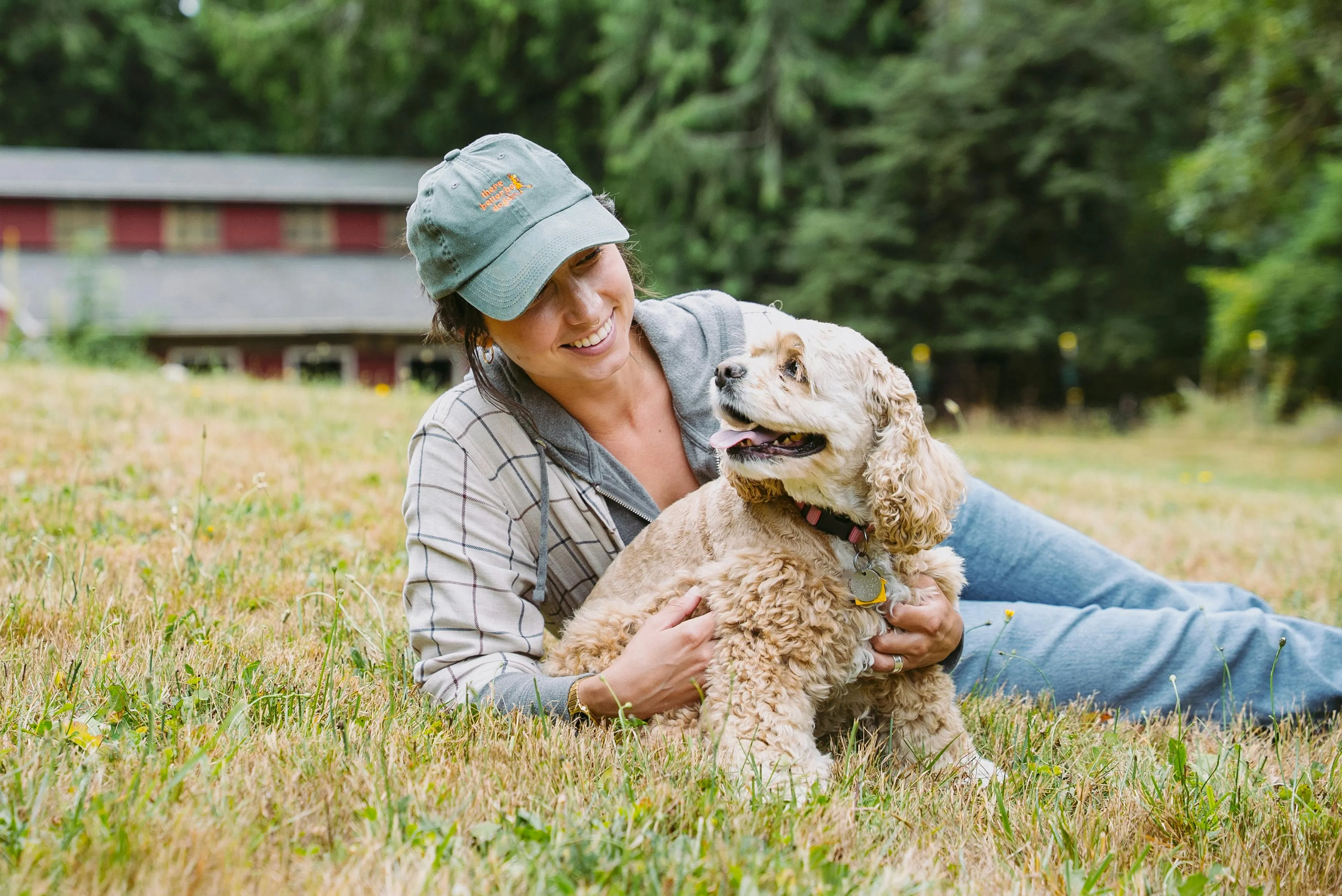Table of Contents
Table of Contents
That frantic scratching. The tiny black specks scurrying through your dog's fur. Fleas are more than just a nuisance; they can pose a serious, even life-threatening danger to your beloved canine companion. While a few fleas cause intense itching, a severe infestation can lead to devastating health consequences. At Telavets, our virtual vets frequently help pet owners tackle flea emergencies before they escalate. Let's uncover the real risks fleas pose and how immediate virtual vet advice can be a crucial lifeline for your dog's health and well-being.
Beyond the Itch: The Hidden Dangers of Fleas
Fleas aren't just annoying; they are blood-sucking parasites. A single flea can bite your dog hundreds of times a day. Now, imagine thousands of fleas (a common number in severe infestations). The toll this takes is immense:
Fleas aren't just annoying; they are blood-sucking parasites. A single flea can bite your dog hundreds of times a day. Now, imagine thousands of fleas (a common number in severe infestations). The toll this takes is immense:
1) Severe Anemia: The Silent Killer
- How it Happens: Puppies, small breeds (like Chihuahuas, Yorkies), senior dogs, or dogs already ill are most vulnerable. Massive blood loss from thousands of flea bites depletes red blood cells faster than the body can replace them.
- Symptoms: Extreme lethargy, weakness, pale gums (press a gum – it should pink up immediately; if it stays white or pale pink, it's an emergency), rapid breathing or panting, collapse.
- The Risk: Untreated severe anemia can lead to organ failure and death. This is the most direct way fleas can kill a dog. The Companion Animal Parasite Council (CAPC) highlights anemia as a critical risk, especially for vulnerable pups.
2) Flea Allergy Dermatitis (FAD): More Than Just a Rash
- How it Happens: Many dogs are allergic to flea saliva. Just ONE bite can trigger an intense, body-wide allergic reaction.
- Symptoms: Extreme itching, relentless scratching/chewing/licking, hair loss (especially over the lower back, base of tail, belly), raw, inflamed skin, scabs, hot spots, secondary skin infections.
- The Risk: While FAD itself isn't usually immediately fatal, the resulting misery is severe. Constant self-trauma creates open wounds prone to deep bacterial infections. If these infections become systemic (sepsis), they can be fatal. The intense suffering also drastically reduces quality of life.
3) Tapeworm Infestation: An Unwelcome Hitchhiker
- How it Happens: Dogs ingest fleas infected with tapeworm larvae while grooming. The larvae mature into adult tapeworms in the intestines.
- Symptoms: Often subtle. You might see rice-like segments near the dog's anus or in feces. Weight loss, poor coat, increased appetite (or lack of), or mild digestive upset can occur.
- The Risk: While a single tapeworm is rarely fatal, a heavy infestation can cause malnutrition, intestinal blockages, and significant discomfort. It highlights the flea's role in spreading other parasites.
4) Vector-Borne Diseases: Fleas as Tiny Disease Carriers
- How it Happens: Fleas can transmit bacteria and pathogens through their bites. While less common in the US than ticks, risks include:
- Bartonellosis ("Cat Scratch Fever," but dogs get it too): Can cause fever, lethargy, lameness, heart issues, or neurological problems.
- Haemoplasma (Mycoplasma haemocanis): Can cause anemia.
- Rickettsia (like Flea-Borne Typhus): Causes fever, lethargy, and other systemic signs.
- The Risk: These diseases can range from mild to severe and potentially life-threatening, especially in immunocompromised dogs, adding another layer of danger to flea infestations.
The Flea Lifecycle Factor: Understanding that only 5% of fleas live on your pet at any time (the other 95% are eggs, larvae, and pupae in your home environment) is crucial. An infestation on your dog signifies a much larger problem in your carpets, bedding, and yard. This makes control challenging without expert guidance.
Is My Dog at Risk? Recognizing the Signs of a Dangerous Infestation
Don't wait for visible fleas! Early signs are critical. Contact a Telavets virtual vet if you notice:
- Excessive Scratching, Licking, or Biting: Especially at the base of the tail, belly, or groin.
- "Flea Dirt": Black specks (like pepper) in the fur – this is flea feces (digested blood). Comb your dog over white paper; add water – it turns reddish-brown.
- Hair Loss, Scabs, or Red, Inflamed Skin: Signs of FAD or infection.
- Visible Fleas: Seeing even one flea means there are many more.
- Pale Gums or Lethargy: EMERGENCY SIGNS of potential anemia.
- Tapeworm Segments: Near the anus or in feces.
Vulnerable Dogs: Puppies, small breeds, seniors, dogs with pre-existing conditions (like immune disorders), and dogs recovering from illness/surgery are at much higher risk of life-threatening complications.
Virtual Vet to the Rescue: How Telavets Can Help in a Flea Crisis
When you discover fleas or suspect an infestation, immediate action is vital. A Telavets virtual vet consultation provides rapid, expert guidance:
- Confirming the Infestation: Share clear photos/videos of your dog's skin, flea dirt, or visible fleas. We'll help confirm it's fleas and assess the severity.
- Identifying Risks: We'll evaluate your dog's specific risk factors (age, size, health) for complications like anemia.
- Emergency Triage: Crucially, we can immediately assess signs of severe anemia (pale gums, weakness, collapse) or severe skin infection. If these red flags are present, we'll urgently direct you to the nearest emergency clinic and advise on critical first steps.
- Safe & Effective Treatment Plan:
- Prescribing Fast-Acting Flea Medication: We can often prescribe vet-recommended, safe oral or topical flea killers to rapidly eliminate fleas on your dog, crucial for stopping blood loss.
- Recommendations for Environmental Control: We'll provide detailed, safe strategies to tackle the infestation in your home (vacuuming, washing, EPA-approved sprays/foggers) – breaking the lifecycle is essential.
- Managing FAD & Skin Infections: We can prescribe medications to relieve intense itching, reduce inflammation, and treat secondary bacterial infections, preventing worsening skin damage. We can advise on soothing baths and wound care.
- Tapeworm Treatment: If tapeworms are suspected or confirmed visually, we can prescribe effective dewormers.
- Prevention is Paramount: We'll discuss and prescribe the best, year-round flea and tick preventative tailored to your dog's needs, lifestyle, and location to prevent future infestations. Consistency is key!
- Follow-Up Care: Easily schedule virtual check-ins to monitor your dog's recovery, skin healing, and ensure the infestation is truly gone.
Why Telavets is Your First Line of Defense Against Fleas:
- Speed Saves Lives: Get expert advice within minutes or hours, not days. Early intervention prevents anemia and severe infections. Don't wait for an in-person appointment slot.
- Stress Reduction: Avoid exposing a potentially anemic or severely itchy dog to the stress of a car ride and clinic visit. Consult safely from home.
- Immediate Treatment Access: Get prescriptions for fast-acting flea killers and supportive care delivered to your door or ready for pickup at your local pharmacy.
- Comprehensive Guidance: We address both the pet and the environment, giving you a complete battle plan.
- Cost-Effective: Avoid unnecessary ER visits for mild cases while ensuring true emergencies get immediate in-person care. Get the right care at the right time.
- 24/7 Peace of Mind: Flea problems often surface at inconvenient times. Telavets vets are available when you need them.
Real-World Example: Luna's Close Call
Luna, a 6-month-old Dachshund puppy, became increasingly lethargic. Her owner noticed she wasn't playing and seemed weak. During a Telavets virtual vet appointment, the owner showed Luna's pale gums via video. The vet immediately recognized signs of severe anemia, likely from a hidden flea infestation discovered via photos of "flea dirt" on Luna's belly. The vet directed the owner to an emergency clinic while simultaneously calling the clinic to brief them. Luna received lifesaving blood transfusions and flea treatment. The Telavets vet followed up virtually to guide home treatment and prevention, ensuring Luna made a full recovery.
Prevention: Your Best Weapon Against Deadly Fleas
Absolutely! Preventing fleas is far easier, safer, and cheaper than treating a severe infestation. Here's what Telavets recommends:
- Year-Round Preventatives: This is non-negotiable. Use vet-prescribed oral chews, topicals, or collars every single month, regardless of season. Over-the-counter products are often less effective and potentially unsafe. A Telavets virtual vet can prescribe the best option for your dog.
- Regular Grooming & Checks: Brush your dog frequently with a flea comb (dip it in soapy water to drown fleas). Check for "flea dirt," especially after walks.
- Home Environment: Wash pet bedding weekly in hot water. Vacuum carpets, furniture, and crevices regularly (dispose of the vacuum bag/canister outside immediately). Consider professional pest control for severe home infestations.
Conclusion: Vigilance and Virtual Care Save Lives
Yes, fleas can kill a dog, primarily through severe anemia, especially in vulnerable pets, or through complications from uncontrolled FAD and secondary infections. The key is recognizing the signs early and taking immediate, effective action.
Don't underestimate the flea. What starts as an itch can escalate rapidly. If you see signs of fleas or, critically, symptoms like extreme lethargy or pale gums, act fast.
Telavet's virtual vet services are your powerful ally in the fight against fleas. We provide:
- Rapid confirmation of infestations.
- Emergency triage for life-threatening anemia.
- Immediate prescriptions for fast-acting flea killers and supportive care.
- Expert guidance on environmental control and safe prevention.
- Peace of mind knowing help is available 24/7.
Protect your dog from the deadly threat of fleas. Book a virtual vet consultation with Telavets today – get expert advice, effective treatment, and year-round prevention plans to keep your furry friend safe, healthy, and flea-free.

